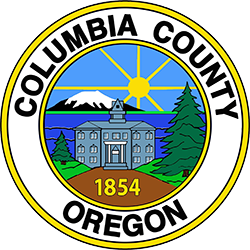Volcanoes and Avalanches
Volcanoes and Avalanches
The Cascade Mountain Range has many volcanoes in varying degrees of activity from recently active Mount St. Helens to long dormant Mt. Jefferson.
Listed below are some steps you can take during and after an eruption to help ensure the safety of yourself, your family and your property.
During an Eruption
- Follow evacuation orders issued by authorities.
- Avoid areas downwind of the volcano.
- Stay indoors if possible. Close all windows, doors and dampers.
- Put all machinery, animals and livestock inside a garage or barn.
- If caught in a rock fall, roll into a ball to protect your head.
- Avoid low-lying areas where poisonous gases and flash floods are most dangerous.
- If caught near a stream, move upslope.
After an Eruption
- Listen to a battery-powered radio for emergency information.
- Cover your mouth and nose; wear goggles to protect your eyes; keep skin covered to avoid irritation or burns.
- Avoid contact with volcanic ash; stay indoors until health officials advise it is safe and avoid driving in ash fall.
- Remove ash load from rooftops. Ash is very heavy – only 2 inches of ash can cause roofs to collapse.
For more information about volcanoes, you can visit:
Avalanches
Almost all avalanches occur on steep slopes between 35 and 45 degrees and in open areas, which are prime spots for skiers and snowmobilers. Avalanches occur because new or windblown snow overloads a weak layer or because of rapid warming. Minimize the risk of being caught in an avalanche by carefully crossing suspect areas one person at a time, staying as far to the sides of a potential avalanche chute as possible. Remain aware of changing weather or temperature conditions. If caught in an avalanche, quickly remove as much gear as possible to make you lighter, use “swimming motions” and thrust upward to stay near the surface. If you are buried, try to make an air pocket in front of your face and keep your breathing steady.
For more information about avalanches, you can visit:

